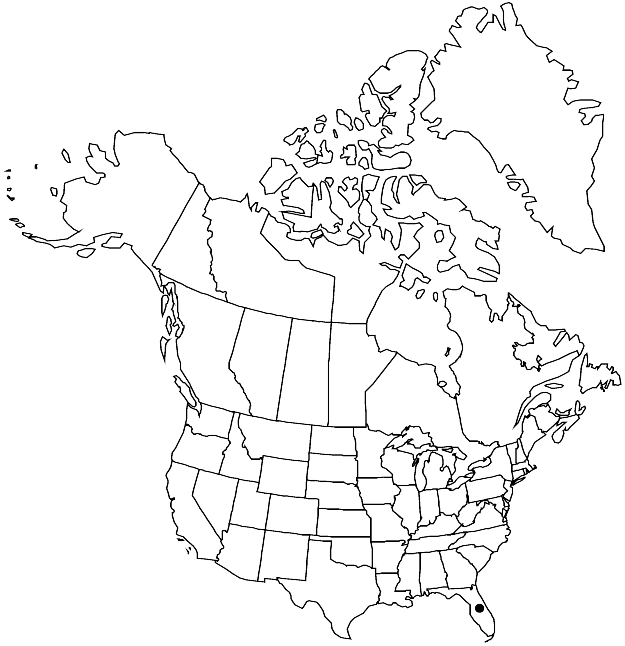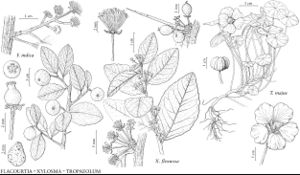Flacourtia indica
Interpr. Herb. Amboin., 377. 1917.
Trees or shrubs, 3–5(–10) m. Leaves: petiole 1–2 cm; blade red to pink when immature, ovate to orbiculate, 8–12 cm, becoming coriaceous, margins glandular-serrate or -crenate, surfaces glabrous or sparsely to densely pubescent. Peduncles 5–10 mm. Pedicels 5–10 mm. Flowers: bisexual ones sometimes on some branches of otherwise pistillate plants; sepals (persistent) slightly connate, greenish, ovate-orbiculate, 1.5–2.5 mm, apex acute to rounded, surfaces pubescent; filaments pubescent at base; ovary ovoid; styles spreading. Drupes reddish to purple or red-black at maturity, globose or ellipsoid, 1.8–2.5 cm. Seeds ca. 4–10, obovoid, 8–10 mm; testa crustaceous, rugose. 2n = 22 (India, cult. Cuba), 44 (Africa).
Phenology: Flowering and fruiting year-round.
Habitat: Roadsides, grassy areas, hammock edges
Elevation: 0-10 m
Distribution

Fla., s Asia (India), Africa, introduced also in tropical and subtropical regions elsewhere.
Discussion
Flacourtia indica has been cultivated in southern Florida for a century or more and has become naturalized there in Broward, Collier, Lee, Miami-Dade, and Monroe counties, the fruits being dispersed by birds (W. S. Judd 1997b). Throughout its wide range, it is highly variable in thorniness, pubescence, and leaf shape; various combinations of extremes have been described as separate species, although the morphological variation seems to be continuous and does not correlate with geography (Judd). Trying to recognize those segregate taxa among the plants introduced in North America seems futile.
Selected References
None.
